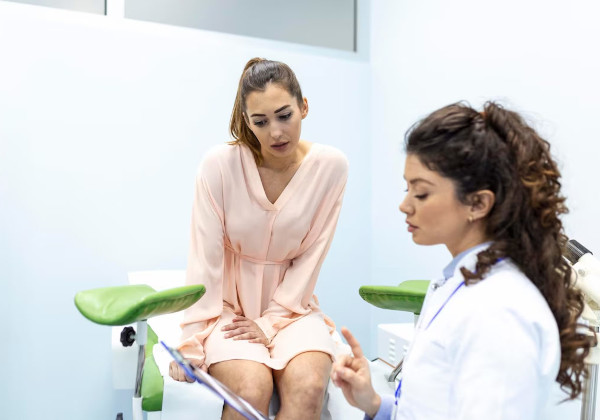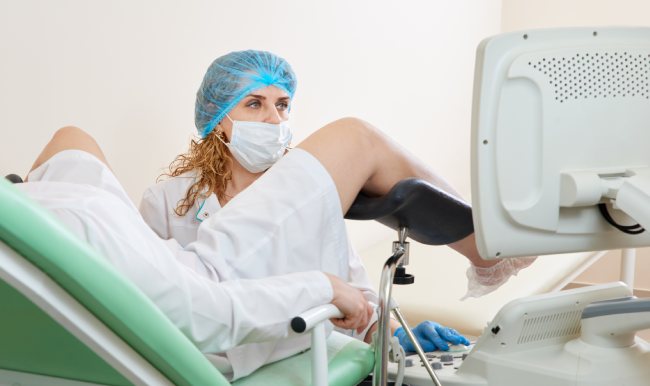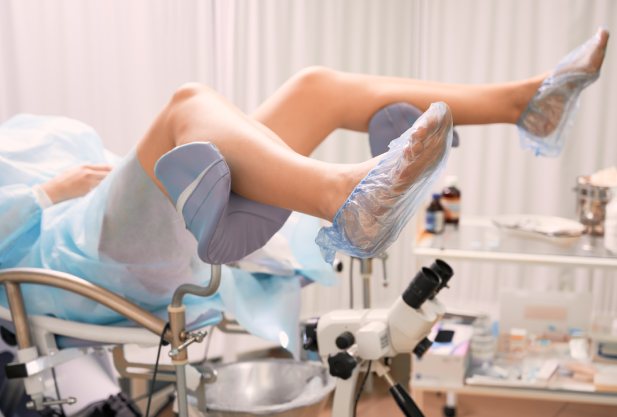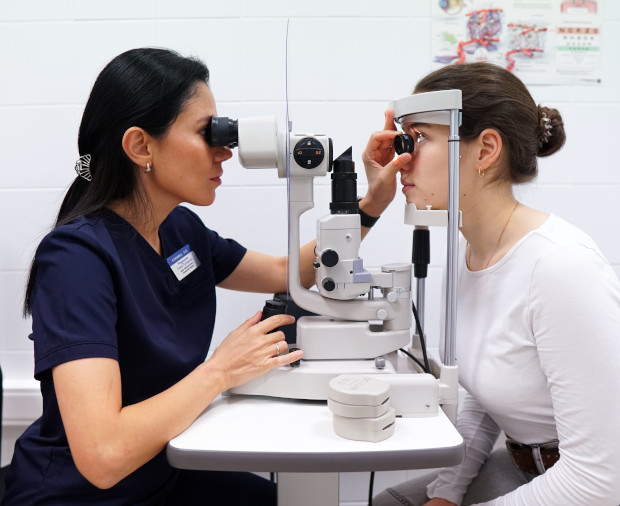Treatment of ovarian cyst

specialists

equipment

treatment
Types of ovarian cysts
Based on the nature of their course, ovarian cysts are classified into 2 groups:
- Functional. Occurs due to improper functioning of the ovary and menstrual irregularities. Disappears on its own after 1–3 cycles
- Pathological. Develop due to excessive growth of ovarian cells. Identified both outside and inside the organ
Functional cysts on the left or right side are most often found in women of reproductive age and do not cause serious symptoms. Pathological neoplasms require treatment because they are accompanied by inflammation and discomfort.
According to the mechanism of development, functional ovarian cysts are of 3 types:
- Follicular. Formed if the dominant follicle does not rupture to release the egg. They are usually small and painless
- Luteal or corpus luteum cysts. Develop due to hormonal imbalance, disorders of lymph flow and blood circulation in the pelvis
- Thecalutein. They are formed from follicles when the hCG level is exceeded, pregnancy occurs, or the presence of choriocarcinoma. Often occur on both ovaries
Depending on the size, there are small (up to 2.5 cm in diameter) and large (more than 5 cm) cysts. The capsule gradually grows due to an increase in the volume of liquid inside. It also develops a leg, so visually the ovarian cyst resembles a mushroom.
Based on the nature of the contents, there are 4 types of pathological cysts:
- Endometrioid. Occurs due to endometriosis. Contains thick, dark-colored blood
- Dermoid. Develops from ovarian tissue, which contains the rudiments of intrauterine structures (ecto-, meso-, endoderm cells)
- Serous. Formed from the epithelial tissues of the outer shell of the ovary. Filled with transparent liquid
- Mucinous. It has a multi-chamber structure and reaches large sizes. Contains mucus
In addition, there are paraovarian and retention ovarian cysts. Paraovarians are formed from the adnexal structures of the ovary, are filled with clear liquid and have a thin wall. Retention cysts are formed as a result of frequent abortions, hypothyroidism, and early puberty. Contain blood or fluid.
Possible complications
Regular observation by a gynecologist and monitoring the condition of the tumor allows you to promptly identify any changes and take measures to preserve women’s health.

If left untreated, an ovarian cyst causes the following complications:
-
Torsion of the pedicle of an ovarian cyst
An acute condition characterized by impaired blood supply to the organ, severe pain in the lower abdomen, nausea, vomiting, and general weakness. Requires urgent surgical intervention, as it can provoke necrosis.
-
Ovarian cyst rupture
Occurs when the wall of the tumor cannot withstand pressure or injury. Causes acute pain in the lower abdomen, bleeding into the abdominal cavity, dizziness, tachycardia, decreased blood pressure, pale skin. The condition is life-threatening and requires emergency surgery.
-
Suppuration of an ovarian cyst
In the presence of inflammatory diseases of the pelvic organs, the infection penetrates into the neoplasm, causing fever, increasing pain in the lower abdomen, and nausea. The spread of the infectious process threatens peritonitis and sepsis. In this case, surgical removal of the cyst and antibiotic therapy are required.
-
Malignancy
Mucinous and serous cystadenomas are prone to degeneration into ovarian cancer. They are accompanied by an increase in the size of the tumor, constant pain and a feeling of pressure, and intestinal dysfunction. Treatment involves surgery with histological examination; if necessary, the doctor prescribes radiation and chemotherapy.
-
Pressure on neighboring organs
Leads to difficulty urinating or defecating. A planned operation is required to remove the cyst.

This award is given to clinics with the highest ratings according to user ratings, a large number of requests from this site, and in the absence of critical violations.

This award is given to clinics with the highest ratings according to user ratings. It means that the place is known, loved, and definitely worth visiting.

The ProDoctors portal collected 500 thousand reviews, compiled a rating of doctors based on them and awarded the best. We are proud that our doctors are among those awarded.
Make an appointment at a convenient time on the nearest date
Price
Other services















































What is an ovarian cyst
An ovarian cyst is a benign neoplasm filled with fluid, less often blood or other contents. Often the disease is asymptomatic and is detected during a routine ultrasound. Damage or growth of an ovarian cyst leads to rupture, torsion, and pressure on neighboring organs, so it must be treated immediately.
An ovarian cyst is most often located on one side: left or right. Ovulation in each cycle occurs in either the right or left ovary, which makes one of them more active. The likelihood of the formation of functional cysts is higher in the ovary in which one or more follicles develop and the corpus luteum is formed.
Bilateral ovarian cysts are extremely rare. Pathological conditions contribute to their development:
Also, bilateral ovarian cysts can be a consequence of genetic diseases, for example, Meigs syndrome.